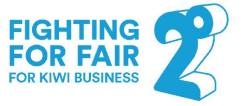In early February, I finished drafting a piece about how 2023 would be a massive year for Low Earth Orbiting satellites – think Starlink, the most famous company in this growing sector.
Then Cyclone Gabrielle hit.
Our teams leapt into action. 2degrees deployed test units we had into the field to provide backhaul (that’s getting info from a cell site into our network), helicoptering units into Gisborne, and we weren’t the only one. The single unit in Wairoa was whipped off a bach and used as the town’s only method of connection.
We have expedited introducing a Starlink Business offering, making 10 enterprise grade devices available to emergency services to help with Cyclone recovery efforts, and opened registrations of interest from our business customers.
LEOs are here – and they are going to be a core component of the telco mix going forward.
The telecommunications market is about to be revolutionised – again – thanks to tens of thousands of satellites being deployed by companies such as SpaceX, Amazon, and OneWeb.
Already thousands of Kiwis have snapped up SpaceX Starlink units – allowing remote dwellers to get online where no mobile or fibre services are available.
But that’s just the start. This year will be when they move from a handy way to connect the bach to the web into a major offering for businesses and a key tool for redundancy and resiliency in geographically diverse and challenging countries such as ours.
Another major benefit will be service such as additional mobile coverage when in remote areas – a huge benefit for thousands of farmers, boaties, trampers, and adventurers generally.
For companies like 2degrees, we aren’t in a position to launch our own LEO network (Starlink has a constellation of more than 3,300 low-earth orbit (LEO) satellites providing high speed broadband connectivity to some 45 countries), but we are in a position to innovative via the technology – and help Kiwi businesses ensure it’s suitable for their needs.
Late last year we established a proof of concept in the Chatham Islands, as remote as it gets in New Zealand. The Te Whero Aura medical centre on the island now employs a Starlink unit to ensure its telemedicine links are always available and of great quality, and we expect other organisations with unique needs to follow suit.
As an additional arrow in the 2degrees quiver, Starlink and other LEO products that will make it highly attractive for the many farms and other organisations located in the countryside requiring high speed connectivity. Far from a replacement or even competitor for the UFB network, LEO services have their place in our service stable, providing greater options and flexibility for the varied needs of our business customers.
And, yes, Starlink is perhaps the ultimate redundancy solution for disaster recovery and business continuity. As a failover service, it can keep you connected even if cables are washed away, cell towers upended in a quake, or any other major disaster strikes. Again, having this additional option is invaluable for creating solutions for specific use cases as they emerge.
 While 2023 is a year where many are expecting challenges, it’s also one where we can expect satellite internet to come of age. You might even say it’s written in the stars.
While 2023 is a year where many are expecting challenges, it’s also one where we can expect satellite internet to come of age. You might even say it’s written in the stars.


















